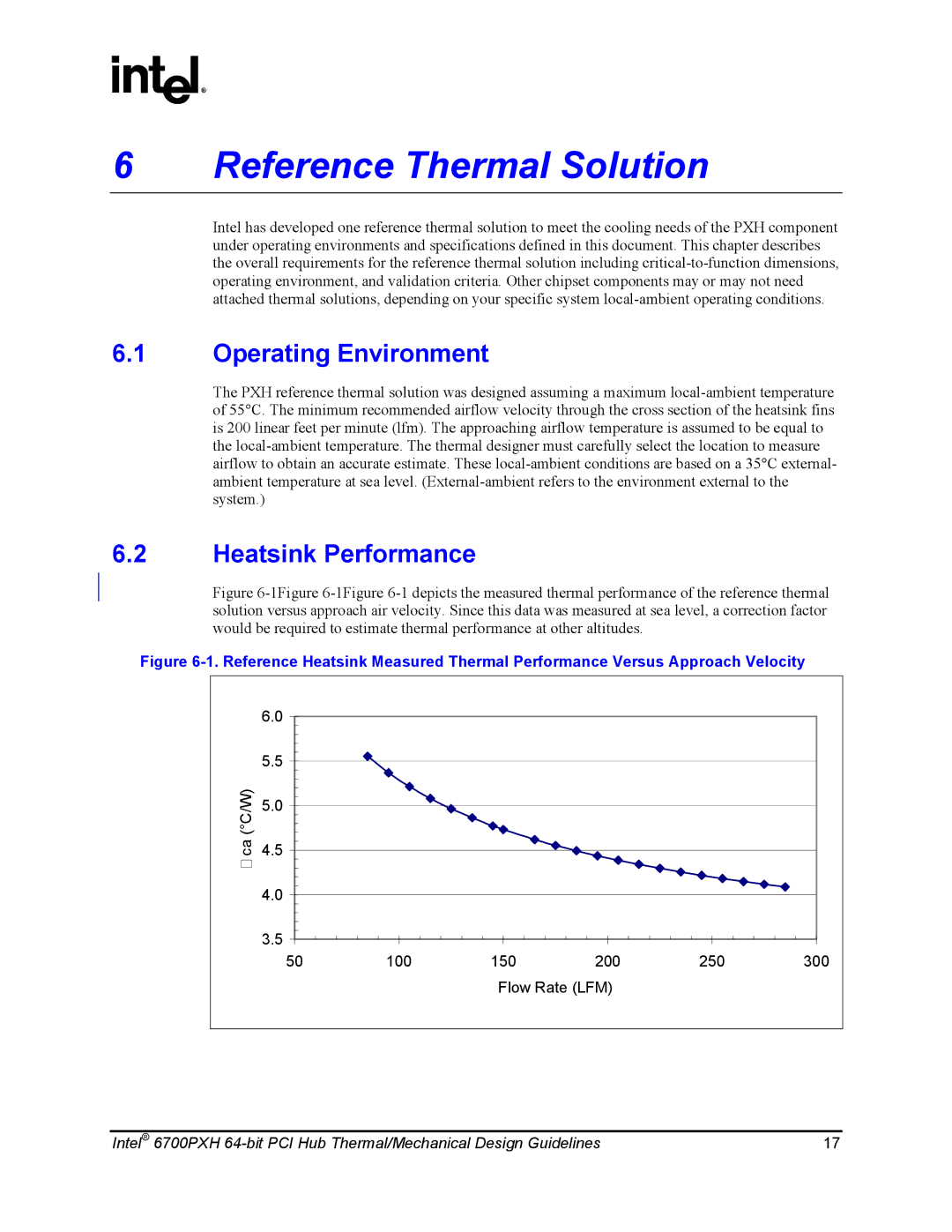
R
6 Reference Thermal Solution
Intel has developed one reference thermal solution to meet the cooling needs of the PXH component under operating environments and specifications defined in this document. This chapter describes the overall requirements for the reference thermal solution including
6.1Operating Environment
The PXH reference thermal solution was designed assuming a maximum
6.2Heatsink Performance
Figure 6-1Figure 6-1Figure 6-1 depicts the measured thermal performance of the reference thermal solution versus approach air velocity. Since this data was measured at sea level, a correction factor would be required to estimate thermal performance at other altitudes.
Figure 6-1. Reference Heatsink Measured Thermal Performance Versus Approach Velocity
| 6.0 |
|
|
|
|
|
| 5.5 |
|
|
|
|
|
ca (°C/W) | 5.0 |
|
|
|
|
|
4.5 |
|
|
|
|
| |
| 4.0 |
|
|
|
|
|
| 3.5 |
|
|
|
|
|
| 50 | 100 | 150 | 200 | 250 | 300 |
Flow Rate (LFM)
Intel® 6700PXH | 17 |
